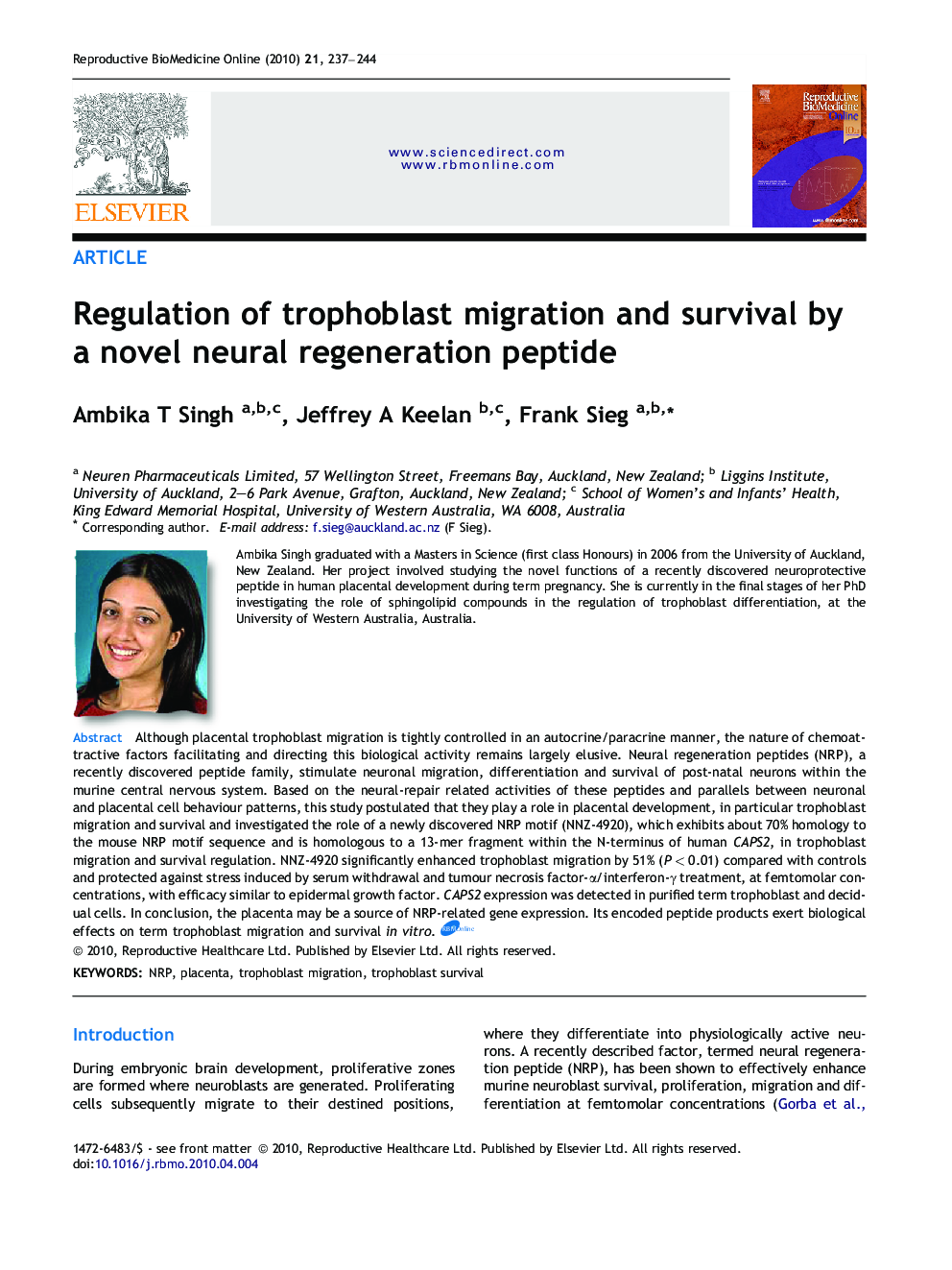| Article ID | Journal | Published Year | Pages | File Type |
|---|---|---|---|---|
| 3971756 | Reproductive BioMedicine Online | 2010 | 8 Pages |
Although placental trophoblast migration is tightly controlled in an autocrine/paracrine manner, the nature of chemoattractive factors facilitating and directing this biological activity remains largely elusive. Neural regeneration peptides (NRP), a recently discovered peptide family, stimulate neuronal migration, differentiation and survival of post-natal neurons within the murine central nervous system. Based on the neural-repair related activities of these peptides and parallels between neuronal and placental cell behaviour patterns, this study postulated that they play a role in placental development, in particular trophoblast migration and survival and investigated the role of a newly discovered NRP motif (NNZ-4920), which exhibits about 70% homology to the mouse NRP motif sequence and is homologous to a 13-mer fragment within the N-terminus of human CAPS2, in trophoblast migration and survival regulation. NNZ-4920 significantly enhanced trophoblast migration by 51% (P < 0.01) compared with controls and protected against stress induced by serum withdrawal and tumour necrosis factor-α/interferon-γ treatment, at femtomolar concentrations, with efficacy similar to epidermal growth factor. CAPS2 expression was detected in purified term trophoblast and decidual cells. In conclusion, the placenta may be a source of NRP-related gene expression. Its encoded peptide products exert biological effects on term trophoblast migration and survival in vitro.
